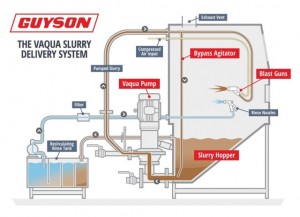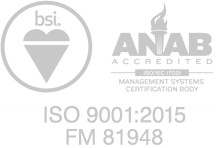Wet Blasting and Dry Blasting both have their advantages. The difference between the two processes at the most basic level is that one process utilizes water as part of the blasting and the other doesn’t. Seems fairly obvious right? So what are the benefits of adding water to the blasting process? This series of blogs, along with providing people with a source of useful information on how to maintain their Wet Blast Equipment, aims to highlight some of the different applications that Wet Blasting can be used for and its benefits. One topic that we at Guyson are asked about frequently is Combustible Dust and how to manage it and reduce the risk of a fire or explosion.
Now, I know what you’re thinking, “FIRE! EXPLOSION! That’s the last thing I need” and you’re right, it’s the last thing anyone needs however for certain blasting applications it is an inevitability. Not that there will be a fire/explosion but that in order to achieve the desired results of certain blasting applications there will be the risk of fire or an explosion associated with it. The good news is the experts here at Guyson have over 100 years of combined experience when it comes to Wet Blasting and Dry Blasting and can help you achieve exactly the results you desire as well as making the process safe by implementing the proper measures and giving you expert preventative maintenance advice.
So Wet Blasting would seem the obvious choice when dealing with material that has a risk of being explosive or combustible right? Well yes and no. Yes the water in the processes means there is no dust created during blasting and on top of that the water in the system means that the material is too wet to spark anyway which makes Wet Blasting excellent when dealing with these types of materials but, and there is a but, because of the utilization of water in the Wet Blasting process it becomes a less aggressive process therefor achieving certain surface finishes, certainly on some harder metals becomes more challenging and that is where Dry Blasting becomes the desired blasting process.
So both processes have their own individual benefits and there are many different factors to consider when looking into Wet and Dry Blasting and if you’re not sure which one is right for you or what you and your business want to achieve. Don’t be overwhelmed, give Guyson a call. Whether you already have blasting equipment and you’re worried about how to prevent fires or explosions from occurring ,whether Wet and Dry Blasting are all completely new to you and you just need some information to help you get started talk to one of our experts at Guyson and we’ll be happy to advise you on what is right for you.




